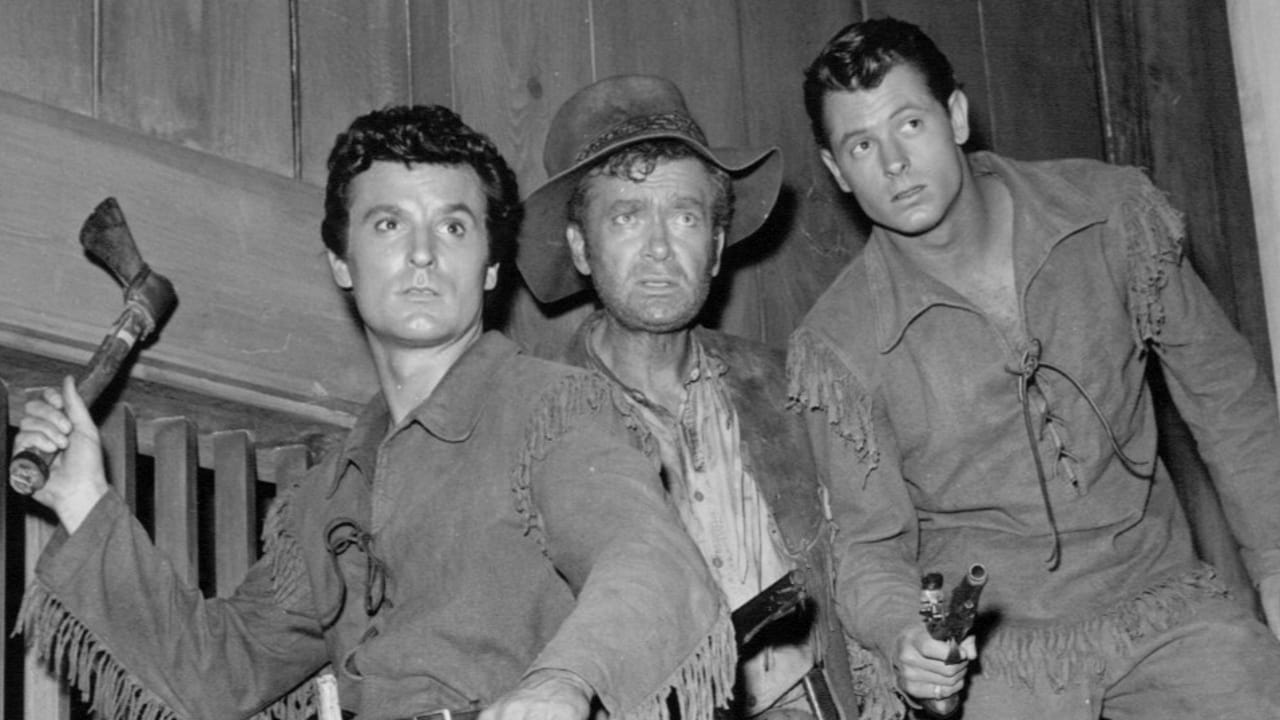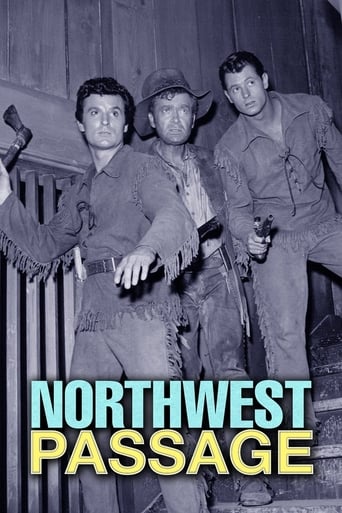

MGM which had produced and had a great success with the big screen adaption of the Kenneth Roberts novel Northwest Passage decided it would make a perfect setting for a small screen series. Although the episodes were of good quality, there was no interest apparently in a series set during the French and Indian War which was what the Seven Years War was called in North America.Keith Larsen starred as Major Robert Rogers founder of Rogers' Rangers and he was supported by Don Burnett as the college educated Langdon Towne, portrait painter and mapmaker and Buddy Ebsen as Hunk Marriner. Ebsen certainly was no stranger to backwoodsman's buckskins having co-starred with Fess Parker in Walt Disney's Davy Crockett.Robert Rogers is credited by many historical sources as being the originator of guerrilla warfare with his Rangers who wore green buckskins the better to blend in with the forest instead of regular British army uniforms. They could live off the land and move silently as an Indian through the woods and kill just as silently. Some of the scenes in this show could be quite brutal and definitely not for the pre-teen kids. After the massacre of General Braddock's forces by the Indian allies of the French on their way to relieve Fort Pitt, Rogers' case was made with the British command.Ironically enough Rogers offered to put together another set of Rangers among the Loyalists to the crown during the American Revolution. His status as American hero got taken down quite a bit after that and he died in relative obscurity.I wish the show had gained more of a following it was pretty good, but if it had Buddy Ebsen would not have been available to play Jed Clampett
... View More"Twenty years after fighting the French in the French and Indian War", is stated above in another comment, as when someone returned to fight for the British in the Revolutionary War.Considering that the French and Indian War was in 1763, twenty years after that was 1783, which was the year that the Treaty of Paris was signed between Great Britain and the United States, which fully- recognized the independence of the United States! The Revolutionary War was long over with by then, ever since Cornwallis had surrendered to George Washington and his army at Yorktown in October 1781.Hence, that "twenty years" is way off. Fifteen years would give 1778, which was in the heart of the Revolutionary War.
... View More"Northwest Passage", a show which a TV Guide article of the time heralded as "When the West was in the East," sparked my interest in the French and Indian War. Although it was over 43 years ago, I do remember the specific 10-19-58 episode entitled "Break-Out" which viewer Dinky 4 mentions. Keith Larson as Major Rogers was not merely captured by "Bad Guys." He was captured by the French forces and as such, Rogers was a prisoner of war working on the road with the other POWs who would not even give their names, ranks, and serial numbers but instead insisted that they were all named "Smith." All knew that if the French knew they had Rogers as a prisoner, the Rangers would never be the same. Of course, great by the end of the episode, Rogers led his fellow POWs in a break-out. I assume that anyone who has seen either the Spencer Tracy movie of the same name or the TV series "Northwest Passage" will think of Major Robert Rogers as an American hero/founding father as well as the originator of The Army Rangers. But here's a bit of a true-history twist. Twenty years after fighting the French in the French and Indian War, Rogers returned to America from England to fight against the American colonists in the American Revolution.
... View MoreThere was such an appetite for TV westerns in the late 1950s that MGM figured it could sell this series even though it's set during the French & Indian War when the frontier was Pittsburgh! Most of its plots, however, could easily be interchanged with those on more traditional westerns. On 10-19-58, for instance, an episode ran titled "Break Out" in which series star Keith Larsen falls into the hands of the Bad Guys who force him to work on a road-gang. This same plot played across the whole "western" spectrum, perhaps because it allowed the lead ctor -- usually a muscular "hunk" -- to appear bare-chested and sweaty and maybe even suffer a bit of bondage and punishment. In "Break Out," Larsen is tied to a post and given a sound whipping. (Despite such sado-masochism, these old TV westerns are often re-run on "Family" channels!)
... View More